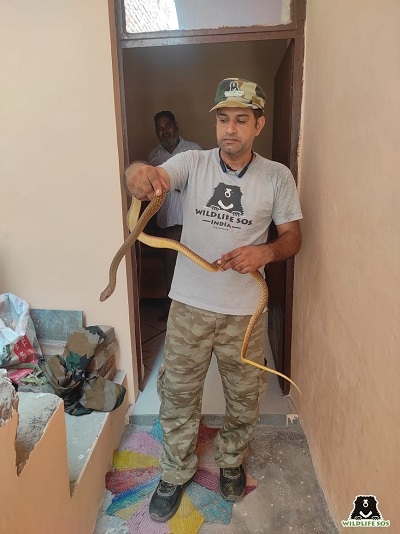Agra,(Asian independent) A team of the Wildlife SOS on Saturday rescued a 5-foot-long Indian rat snake found inside a refrigerator stand in Sikandra, Agra.
The snake, which had taken refuge in an unexpected location, was safely rescued and released back into its natural habitat after a careful half-hour-long operation.
The incident unfolded in a residential building in Sikandra, when the surprised occupants discovered a 5-foot-long Indian rat snake inside the refrigerator stand.
The NGO’s rescue team swiftly reached the location. With precision, the team executed a safe and efficient rescue operation. The snake, which had sought shelter in the confined space of the refrigerator stand, was gently coaxed out and secured in a transport container, ensuring its well-being throughout the process.
After a thorough on-site examination, the snake was released back into its natural habitat.
Kartick Satyanarayan, Co-founder and CEO, Wildlife SOS, said, “Encounters like these remind us of the anthropogenic pressures wildlife faces due to urbanisation. This successful rescue underscores the importance of Wildlife SOS’ Rapid Response Unit in handling diverse situations. Our team is dedicated to safeguarding both animals and humans while ensuring the seamless rehabilitation of animals to their natural habitat.”
Baiju Raj M.V, Director of Conservation Projects at Wildlife SOS, said, “The Indian rat snake is a non-venomous species whose likeness to the Indian spectacled cobra often results in retaliatory killing of the snake. I am thankful to the empathy shown by the rescue callers who sought expert intervention by Wildlife SOS rather than acting on their own.”
The Indian rat snake (Ptyas mucosa) is a vital part of various ecosystems found across India, known for its adaptability and valuable role in maintaining local ecological balance. With a diet consisting of rodents, birds, and small animals, these non-venomous snakes play a crucial role in curbing pest populations in urban and agricultural areas.








